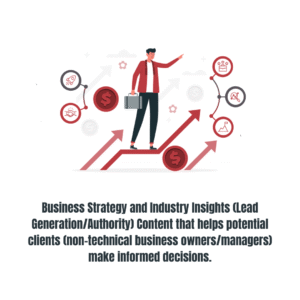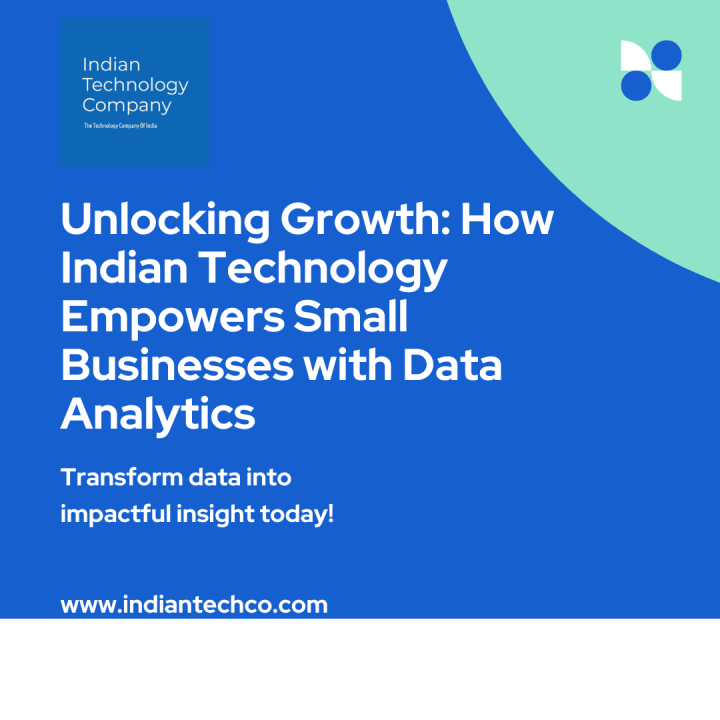Business Strategy and Industry Insights (Lead Generation/Authority) Content that helps potential clients (non-technical business owners/managers) make informed decisions.

In today’s fast-moving digital landscape, business growth is no longer just about having a good product or service — it’s about making smart, strategic decisions that leverage the right technology, people, and processes.
But what happens when you’re a non-technical business owner or manager?
How do you cut through the jargon, avoid costly missteps, and make decisions that actually grow your business?
This guide is your roadmap. We’re breaking down essential strategies and insights — no coding knowledge required — so you can lead with confidence and clarity.
🚀 Your Roadmap to Digital Transformation: A Non-Technical Guide
Digital transformation isn’t just for big tech companies. Whether you’re running a local service business, a manufacturing firm, or a retail brand, digitising your processes can unlock real ROI.
Start with these questions:
-
Are there manual tasks eating up time?
-
Is your customer data spread across spreadsheets and emails?
-
Do you rely heavily on staff to complete routine operations?
Key areas for digital modernisation include:
-
CRM systems for sales and customer service
-
E-commerce platforms and integrated payment systems
-
Automated marketing tools
-
Cloud-based project and team management tools
Remember: digital transformation is not about “going tech.” It’s about solving business problems with better tools.
🧩 In-House vs. Outsourcing Software Development: Which Is Right for You?
One of the first decisions you’ll face is whether to build your tech in-house or outsource to a software development partner.
✅ Outsourcing is ideal if:
-
You need to launch quickly
-
You don’t have technical staff
-
You want access to specialised skills on demand
🏢 In-house makes sense if:
-
You’re building a long-term product core to your business
-
You can afford ongoing salaries and infrastructure
-
You want complete control over development
Tip for non-technical leaders:
Focus on finding a partner who speaks in terms of business outcomes, not just code. Ask them how they’ll impact your revenue, customer experience, or operational efficiency.
❓ Key Questions to Ask Before Hiring a Web Development Agency
Not all agencies are created equal — and flashy portfolios don’t always mean business results.
Ask these before signing a contract:
-
What results have you achieved for businesses like mine?
-
How do you approach ROI, lead generation, and UX?
-
Will I have visibility into progress (timelines, reports)?
-
How do you ensure my site is SEO-optimised and conversion-ready?
-
What happens after launch — who handles updates and support?
Choosing the right partner can mean the difference between a website that looks good and one that actually converts.
⚙️ Understanding Agile Methodology: Why It Works
You may hear your tech team or agency mention Agile — but what does it really mean for your project?
Agile methodology is a flexible, iterative approach to software development.
Instead of waiting months for a finished product, you get:
-
Frequent updates
-
Early feedback
-
Ability to adjust priorities mid-project
For you as a business owner, that means fewer surprises, more control, and faster delivery of usable features.
👤 The Role of a Business Analyst in Software Development
A Business Analyst (BA) acts as a translator between your vision and the developers’ execution.
They:
-
Gather and define your business needs
-
Turn them into actionable requirements
-
Ensure alignment between stakeholders and tech teams
If you’re non-technical, having a BA on your project is crucial. They ensure your investment actually delivers what you need — not just what the devs think you want.
📦 Creating a Minimum Viable Product (MVP) Strategy That Converts
If you’re launching a new digital product or platform, don’t build the whole thing at once.
Start with an MVP — Minimum Viable Product.
An MVP includes only the core features needed to solve the main problem for your users. It helps you:
-
Launch faster
-
Test real-market response
-
Save time and money
-
Learn what to build next (based on actual usage)
A well-built MVP isn’t “basic” — it’s strategic. It’s designed to attract early adopters and validate your idea with real users.
📝 Effective Product Requirement Document (PRD) Checklist
Before any developer writes a single line of code, you need a Product Requirements Document (PRD).
Here’s what a solid PRD includes:
-
✅ Project overview and objectives
-
✅ User personas and pain points
-
✅ Key features and functionality
-
✅ Visual wireframes or references
-
✅ Success metrics and KPIs
-
✅ Timeline and budget expectations
A strong PRD keeps your project on time, on budget, and aligned with your business goals — no technical knowledge needed from your side.
🧠 Final Takeaway: Lead with Strategy, Not Tech
You don’t need to become a developer to drive digital success.
You just need the right knowledge, questions, and partners.
Focus on:
-
Business goals first
-
Clear outcomes second
-
Tools and tech last
When you approach digital decisions through the lens of value, clarity, and results, you’ll not only avoid expensive mistakes — you’ll position your business to lead in a competitive market.
📩 Ready to Take the Next Step?
If you’re thinking about upgrading your digital strategy or launching a new product — let’s talk.
We’ll help you navigate the tech world in plain business language, with solutions that drive growth, not confusion.
📌 SEO Keywords Used:
-
Digital transformation for business
-
Non-technical guide to software development
-
Outsourcing vs in-house development
-
Agile methodology for managers
-
MVP strategy for startups
-
Hiring a web development agency
-
Business analyst in software development
-
Lead generation through digital strategy




